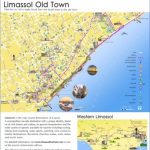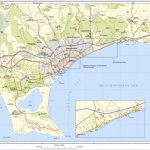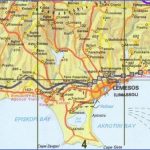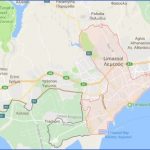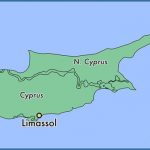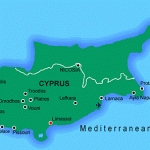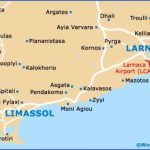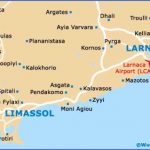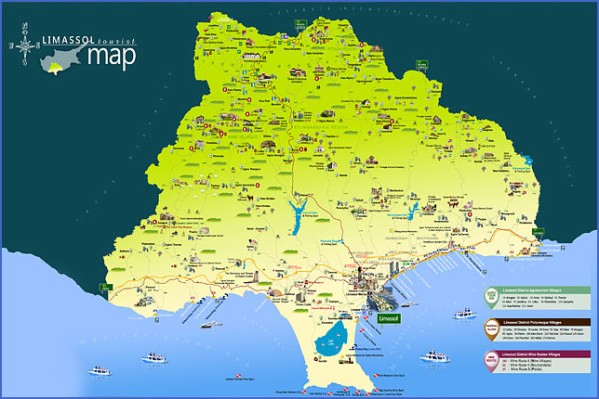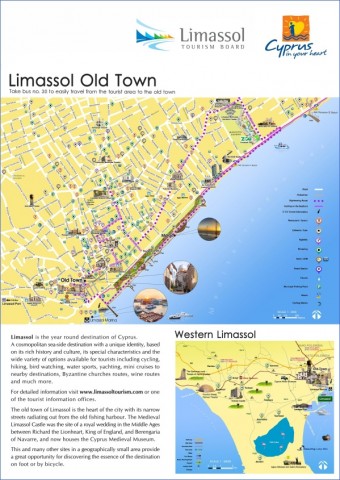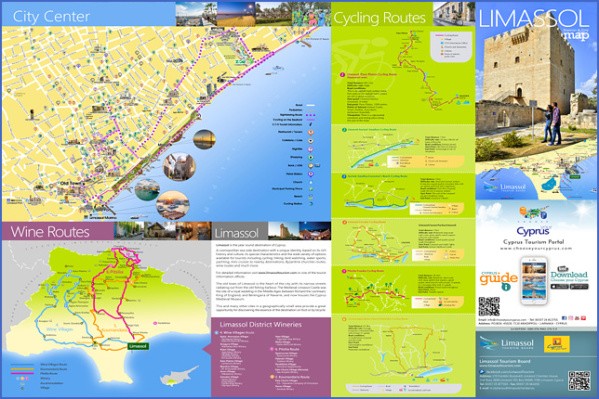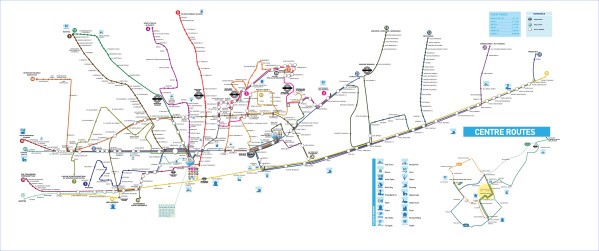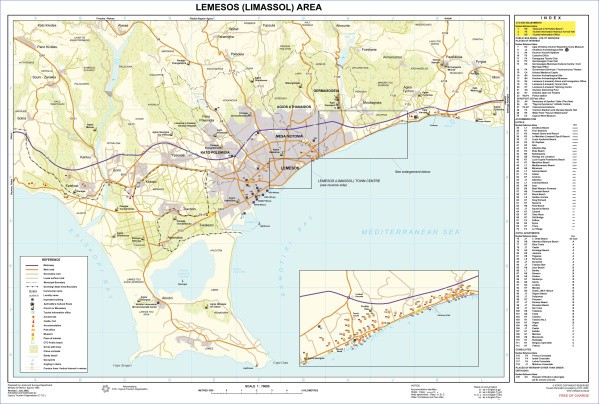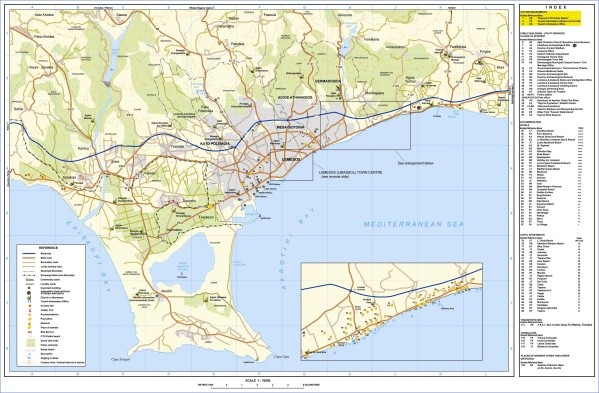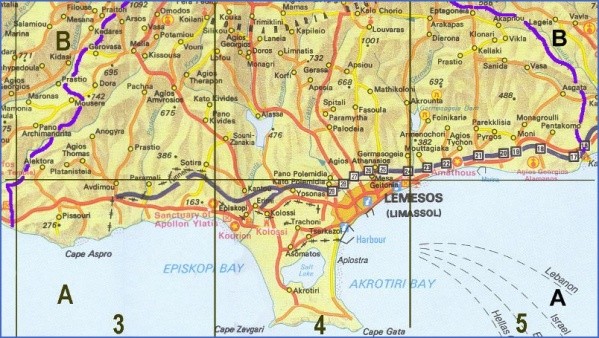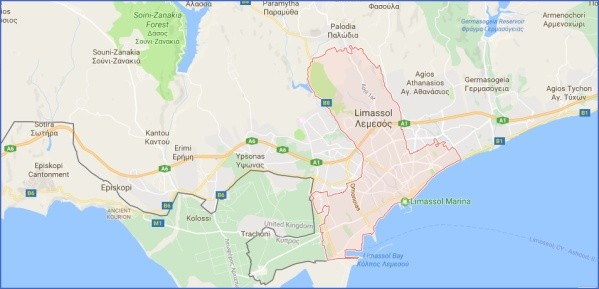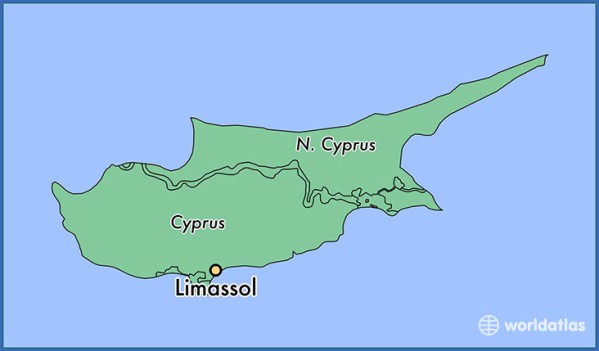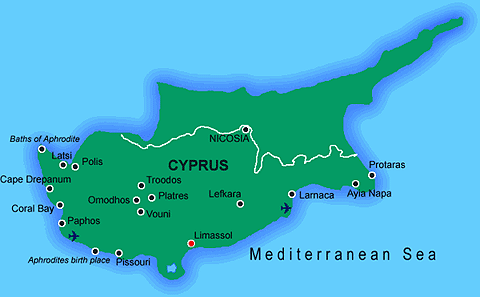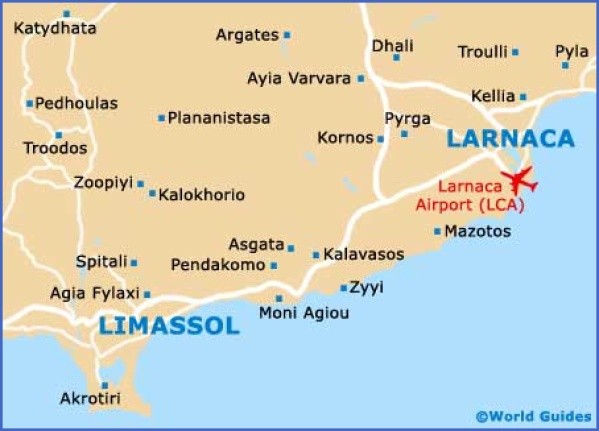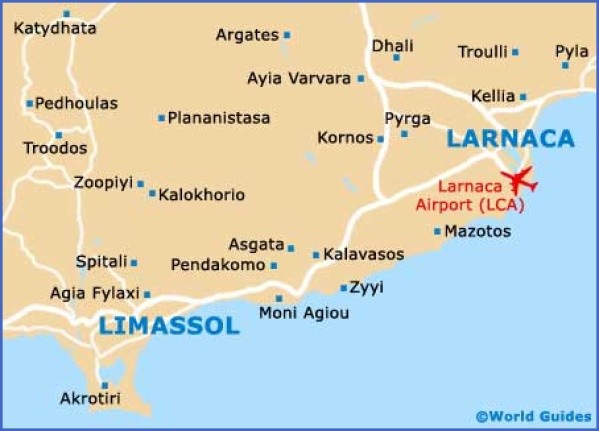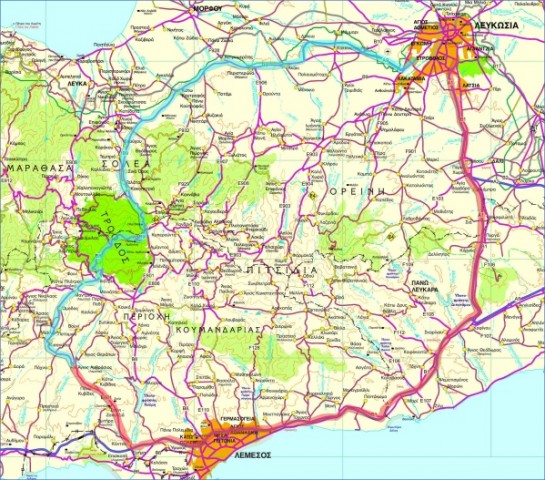LIMASSOL DISTRICT
Old pier (Limassol old port)
Limassol district, with an area of 1.388,4 sq km and a population of 235.330 persons, occupies the southern part of the island. Its area constitutes about 15% of the total area of Cyprus, while its population represents 27,3% of the population of the free part of Cyprus. The main town of Limassol district, the homonymous capital, has a population of 101.000 persons, that is 42,92% of the total population of Limassol district. Limassol district is the second most populous district of Cyprus, while the town of Limassol is the second largest town of the island, after Nicosia. The most populated settlements within Limassol district are: Polemidia (22.369), Mesa Geitonia (14.477), Agios Athanasios (14.293), Agia Fyla (14.451), Germasogeia (13.421), Ypsonas (11.117), Zakaki (5.834), and Trachoni (3.940).
Agriculture was for a long time the main economic activity of the countryside. Efforts were exerted to harness, through dams, the rain water flowing in streams and ending up in the sea. Currently Limassol farmers, apart from dry-fed almonds and vines, cultivate potatoes, vegetables, a great variety of fruit trees, bananas, flowers, avocados and citrus trees. Manufacturing industry is mainly concentrated in the industrial estates and zones, though minor centers are found in large villages. In
Limassol there are two industrial estates at Ypsonas and Agios Athanasios with a third one under construction at Kolossi. The two industrial zones are found at Agios Athanasios and Mesa Geitonia. In Limassol, however, there is a great number of industrial units (more than one quarter of the total number of Cyprus), engaged in almost all types of industrial products. The wineries of Limassol, particularly KEO, ETKO, LOEL and SODAP, are well-known not only in Cyprus but internationally as well. They are situated in the south-western part of Limassol town, though some of them own installations elsewhere. Tourism has realised substantial growth in recent years. Five tourist areas are established in Limassol: (a) in Limassol town, (b) in Amathous area, (c) in Pissouri, (d) in the mountains (Platres, Prodromos, Troodos) and (e) in Agros.
Map of Limassol Limassol Map Photo Gallery
In the administrative area of Limassol there is a large variety of scenery and a large number of cultural features. Apart from the unique lake in the peninsula of Akrotiri, dams, reservoirs and ponds of varied dimensions lend a distinct colour to the landscape, while the large variety of rocks give rise to a fascinating relief. Within the administrative area of Limassol lies the British base of Akrotiri-Episkopi.
Limassol, Map & Directions
THE TOWN OF LIMASSOL
It is still not known when Limassol was built and what its initial name was. The initial nucleus of the settlement, most probably, was near the Garyllis mouth. Situated, however, between the two ancient kingdoms of Kourio and Amathous, it may not have been able to spread and grow in population, while these two cities were flourishing. It appears, that, during the pre-Christian era, there existed a small settlement, the name of which is unknown, occupied primarily with farming and fishing. No conclusive evidence exists for the names “Neapolis” and Theodosias”, often attributed to Limassol during the early Byzantine years. It may be that the name “Neapolis” was used following the destruction of Amathous during the 12th century A.D., or, possibly, a few years prior to that, when old Limassol (Amathous) and new Limassol (Neapolis) co-existed. Since, according to Constantine Porfyrogennetus, during the 10th century A.D. the city is mentioned by the name “Nemesos” and is included among the 15 major cities of Cyprus, it can be surmised that Neapolis appeared prior to the dissolution of Amathous. The history of Limassol is undoubtedly established with the arrival, in Cyprus, of King Richard the Lionheart (Coeur de Lion) of England, during the Third Crusade. The conduct of Isaakios Komninos, then King of Cyprus, the marriage of Richard to Berengaria at the chapel of St George, the battle of Tremetousia between the armies of Richard and Komninos, the defeat and capture of the latter, the total destruction of Amathous (1191 A.D.) and the bolstering of the population of Limassol, were the basic factors that contributed to the city’s independent and dynamic rise. During the Frankish period (11921489 A.D.), Limassol experienced both rise and decline, and was struck by a series of natural disasters as well as raids. During this period, Limassol becomes the seat of a Latin bishop, which was maintained until the Turkish conquest of the island in 1571.
ARCHAEOLOGICAL SITES AND CULTURAL MONUMENTS
The Medieval castle of Limassol
The Medieval Castle. The castle, only a short distance from the old port, was probably built during the 13th century. The original form of the castle is not known, since it has suffered repeated destruction by the Genoese, the Mamelukes and, later on, the Turks. In 1525, the Venetian governor of Cyprus, Fransesco Bragadino, ordered the blowing-up and destruction of the castle, upon its being seized by Turkish pirates. The castle was restored during the 14th century, as well as towards the end of the 15th or beginnings of the 16th century. Both the 1491 earthquake as well as the many raids contributed to major alterations to its initial design. The grand Gothic hall in the basement is particularly impressive, featuring elegant semi-domes and pillars. A narrow corridor links this hall to a small, domed chapel, framed by two other small and domed compartments. These may be traces of the original castle. According to tradition, this is where Richard the Lionheart’s wedding to Berengaria of Navarro was performed in 1191, when the then King of England conquered Cyprus. The first floor features ten almost identical rooms, used as prison cells. Today, these cells host Byzantine, Frankish and Venetian exhibits, as well as artefacts from more recent times. The ceramic exhibits in the showcases are Cypriot, Byzantine and imported, dating from the 10th to the 19th century. One can even see examples of palaeo-Christian pottery dating from the 4th to the 9th century A.D. The Castle of Limassol has also been enriched with a large number of medieval objects and is now known as the Medieval Castle. Apart from the successful installation of an olive-press in the courtyard of the museum, the rooms host stone catapult balls, iron cannon balls, a cannon of the 17th century, various jars (8-10th century A.D), wood-carvings (17th – 18th c), coins of various historic periods, pottery (13th – 19th c), Cypriot glazed pottery, early Christian clay lamps (5th -7th c A.D.), etc.
Maybe You Like Them Too
- Top 10 Islands You Can Buy
- Top 10 Underrated Asian Cities 2023
- Top 10 Reasons Upsizing Will Be a Huge Travel Trend
- Top 10 Scuba Diving Destinations
- World’s 10 Best Places To Visit


